The Ultimate Content Marketing Programs Guide for SaaS
How to Start and Scale Your First Content Marketing Program with Templates
Hey - it’s Alex - this time together with Matteo!
Today we cover:
1️⃣ The 5 steps to create content that drives inbound leads
2️⃣ 27 content types (+ examples)
3️⃣ Content marketing calendar (free Figma file)
In case you missed the last 3 episodes:
✅ How to create a high-converting SaaS homepage
✅ Ultimate LinkedIn ads guide for early-stage SaaS companies
✅ The best Outbound GTM Tech Stack
If you’re new to the newsletter: I share with you bi-weekly 3 actionable growth tactics that will help you quickly grow your SaaS business from €0 to €1 million ARR 🚀.
A quick word from our sponsors
📢 SaaS growth tactics - Get access to 100+ actionable SaaS growth tactics 🚀
Unlock the growth potential of your SaaS product with a list of 100+ proven and actionable growth tactics for early-stage B2B SaaS startups to grow from 0€ to 3€ million ARR - helped 200+ SaaS leaders.
📢 Trackdesk - Your free affiliate marketing software for SaaS companies
1,000+ companies grow their affiliate revenue with trackdesk. 0€ initial investment. Recurring commissions, fully automated affiliate payouts, real-time performance reports, seamless Stripe integration, and access to the only Partnership Managers Marketplace in the world.
Want to reach 4500+ early-stage SaaS founders/leaders? Sponsor the next newsletter.
Why Content Should Be Your First Channel
Content marketing is an indiscussible channel for early-stage B2B startups. It can drive results across the whole funnel — brand awareness, acquire leads, revenue, and even expansion — while making acquisition organic and scalable, which is what every VC seeks.
Content should be among your first channels as an early-stage SaaS. Once you’ve developed the foundation of your product marketing messaging, content is the first avenue to help you articulate that into a compelling narrative.
Yes, outbound should also be among your first channels, as it’s mostly free, highly scalable, and provides faster feedback loops than content.
However, in B2B you’re selling to professionals; and no professional or company will buy from someone they don’t trust. Content is a unique avenue that lets you show your audience you’re an expert in what you're selling. Differently from ads or outbound, content helps you project confidence in your prospects, helping them build a relationship of affinity so that when the time is right, they’ll trust you with their money, and choose you over competitors.
Where Every Startup Gets Content Marketing Wrong
To this day, the cheapest and most scalable content starts in written form, especially thanks to AI which gave us “infinite labor”. But where AI solves for execution, the strategy gap remains wider than ever. Most startups we advise struggle with content strategy.
Common pitfalls include:
❌ Not investing in product marketing ahead of content,
❌ Inconsistent production and distribution,
❌ Over-reliance on AI-generated content that drives volume but lacks depth and taste.
But above all, one of the biggest mistakes we see is that we need to figure out where to start with content.
“We should talk about our vision”, “Let’s do a series about the key customer pain points”, or “We need to target these high-volume keywords”.
More often than not, these mistakes are rooted in the founders’ inner conviction and vision, because they hire junior marketers on their first rodeo; or because even when they hire senior experts, they discard their advice (yes, this happens all the time!).
How can your startup overcome these pitfalls and develop an effective content marketing strategy that delivers tangible results?
In this post, we’ll go beyond the cookie-cutter advice like “you must know your audience”. We’ll devise a strategy process intertwined with product marketing by defining your buyer’s stages of awareness, selecting your best starting point for content production, and then sharing how to build robust content programs using both human writers and AI.
Disclaimer: Before Doing Content, Please Invest in Product Marketing
Before writing content, you must invest in product marketing.
Product marketing is the strategic foundation that defines your TAM and target personas (aka. Ideal Customer Profile), analyzes their goals, the alternatives/competitors they’re using to achieve them, and the problems arising from them; helping you “message” and “position” your company as a compelling solution.
We see many founders and teams under-indexing in product marketing, tremendously diluting their content. Product marketing comes before content; if you skip it, you’ll just have weaker messaging, weaker content, and more confused prospects.
So if you haven’t invested in product marketing, you might not be ready for this guide. Instead, check out these resources:
✅ The Ultimate Framework to Build Your Ideal Customer Profile
✅ The Importance of Targeting in B2B Demand Gen
✅ The perfect SaaS homepage template
✅ The definitive SaaS homepage framework
✅ Follow Anthony Pierri or Robert Kaminski on LinkedIn
Step 1. Map Your Stages of Awareness
Now that you’ve set your product marketing foundation and are ready to confidently articulate your value proposition in a language relatable to your ICP, you need to map your awareness stages.
The Stages of Awareness is a framework built by Anthony Pierri that helps you understand the level of awareness your customers have towards the outcome they’re trying to achieve with your product. FYI, this is not content, but product marketing.
For example, Anthony used the B2B gift-sending platform Sendoso to explain the framework. Let’s go through it in a bit more detail.
1.Outcome Awareness.
At this stage, prospects are aware of different potential outcomes they want to achieve. Outcomes as intended here refers to the JTBD definition according to Bob Moesta — the process a consumer goes through when they aim to change their existing situation into a preferred one, but cannot do so because of constraints that stop them.
In the case of Sendoso:
👉 Maybe they want to focus on making their sales team happier at work.
👉 Maybe they want to make their teams more productive overall.
👉 Maybe they want to close more deals.
This is typical of a prospect that is in the earliest stages of their purchasing decision and/or in new markets — they know what they want to achieve, but are not aware of how to do it or which solutions are out there.
Instead, they are battling against “the old/current way” of doing things, because they’re not aware of a “new way” (well, that could be you!).
2.Use Case Awareness
Once a prospect has picked their outcome, they start evaluating different things they could do to achieve that goal. These options reflect the next stage of awareness, where customers are shifting to explore solutions to achieve their outcomes, according to Anthony Ulwick’s definition of JTBD.
In the example of Sendoso:
👉 Maybe they want to focus on training their team in new sales methodologies.
👉 Maybe they want to create new sales enablement material.
👉 Or maybe they want to start sending gifts to prospects during the sales process.
Let's assume they decide to go with sending gifts to prospects as the key use case.
3.Product Category Awareness
Once they've chosen a use case, they need to figure out the best product category that will allow them to send gifts to customers. They start debating between:
👉 eGift card platforms
👉 Branded merch platforms
👉 and gift-sending platforms.
Each of these product categories will help them accomplish the use case but in very different ways, depending on their product capabilities, features, and related benefits. This awareness stage is typical of the middle stages of the purchasing funnel, but also of mature markets where customers are already aware of the existing product categories to solve specific issues. Ultimately, they decide to go with gift-sending platforms.
4. Product Awareness
Now that they’ve committed to a product category, they evaluate different alternatives of gift-sending platforms to compare each feature and functionality to see which one best fits what they need to be able to do until they make a purchasing decision. They check out Reachdesk, Postal, and Sendoso.
Depending on the growth model of your company, they will:
👉 PLG: sign up for trials of these products, and compare capabilities against them.
👉 Sales-led: book demos and go through the sales process to compare pitches and prices.
5.Purchase Decision
After completing their research of competitive alternatives, they commit to the purchase decision. Again, depending on the motion of your company, they will:
👉 PLG: upgrade to a paid plan.
👉 Sales-led: sign a contract.
Note: In the real world, some stages of awareness might be mixed or have different orders. The awareness stages, like every other framework, attempt to make complex real-life scenarios more linear and simple. This prescribes that each prospect is 100% clear about the outcomes they want to achieve, their use cases, the product categories to help them do so, and each provider. However, only some prospects have perfect clarity or perfect knowledge of the market; and on the other hand, only some companies know how to portray themselves against competitors. That shows how critical product marketing can be in helping prospects to make the right choice.
By the end of this section, you should have mapped out your awareness stages for every potential outcome your company can help with. Based on that, you can work back the related use cases product features, and related categories.
For example, in the case of Cello:
Step 2. Decide Which Awareness Stage to Start with
The stages of awareness are great for mapping out your key product marketing messages and contextualizing them to your customer journey. You can use these not just to reverse engineer a compelling content map, but also to understand where to start devising your content programs.
As mentioned above, most marketers and advisors will tell you:
“Start creating BOFU (bottom of the funnel) content.”
In our opinion, it’s not that easy, but it depends on the awareness stages of your prospect and the maturity of your market.
Mature market 👉 start from Product Awareness.
If you’re in an established market with multiple competitors, you need to convince your market your product is the best in your category.
Start a content program around your players in your category and purchase decisions. If your competitors have high traffic, you’ll also piggyback from prospects searching for their brand name. We’ve listed below a list of content pages you should start with. In the example of Cello, that’d mean creating comparison pages with their competitors or boasting about why Cello is a superior alternative for their target segments.
Emerging market 👉 start from Product Category Awareness.
If you’re in an emerging market and your product category is rising as a better way to reach an outcome, you need to convince your market your product category is the go-to alternative. For example, in the case of Cello which is targeting founders looking to scale their organic acquisition, they might want to create a program around why a user referral program is the best way to do so compared to other alternatives like SEO or outbound.
New market 👉 start from Use Case Awareness.
If you’re building an innovative product or starting a new market, there might be no direct competitor and you might be battling against “the old way of doing things”. For example, that could be doing things on spreadsheets, manually, etc. In this case, you should invest in creating awareness at the higher stages, around your customer outcomes and product use cases. In this way, you’ll be able to educate your prospects about the fact that there is a “new way of doing things”, and you’re building it for them. For example, Cello could create content that showcases why user referrals through an API solution are 10x better than doing it in-house.
By following this strategy and contextualizing your content to the market, you’ll reach your target market at its current stage of awareness, speaking to your prospects in their language, and saving countless resources on pushing messages that are either too early or too late for the market.
Let’s continue with the Cello example. Because they operate in a fairly competitive and mature market, I’d start creating content around the product awareness stage, covering competitive products within the user referral category to build a differentiating wedge with other players.
After completing one content program around this awareness stage (more on this below), I’d move up or down the awareness stages depending on the results or reactions around the content.
Step 3. Think in Content Programs, not Posts
Now that we’ve identified which stage of awareness we want to start from, we can move into content production strategy.
Each stage of awareness has specific post types — think of them as “template angles” that generate awareness in that specific stage of your buyer’s journey, helping spark reactions, and conversations, and ultimately “graduate” your prospects to the next stage of awareness.
To make it easier for you, we’ve created a list of 25+ content types, including examples.
25+ content types (+examples)
Outcome awareness
Glossaries — What is {Term}?
Formulas — How to calculate {Term}
Example: Paddle
Statistics — X New {Topic} Statistics for 2024
How many — How many {Statistic} {Topic}
Example: ExplodingTopics
Tips — X {Topic} Tips for 2024
Example: Moonsend
Ideas — X {Topic} Ideas
Example: BSS Commerce
Examples — X {Topic} Examples for 2024
Example: Hubspot
Difference — {Topic} vs {Topic}: What's the Difference?
Example: Ahrefs
Types — X Types of {Topic} You Should Use/Avoid
Example: Cognism
Use case awareness
How-to — How to {Use case} (with current solution)
Example: Databox
Example: Drivetrain
Example: Freshbooks
Example: Descript
Example: User Pilot
Example: Paddle
Example: Expandi
Example: Evaboot
Example: Accountable
Example: Raaft
Process — Step-by-Step Guide to {Use case}
Ways — X Ways to {Use case}
Mistakes — X Top {Use case} Mistakes to Avoid
Example: Klenty
Example: Cognism
Example: Authoredup
Best Practices — X Best Practices to {Use case}
Example: PhantomBuster
Example: Loomly
Example: Churnkey
Templates — {Use case} Template: Free Download & Step-by-Step Guide
Product category awareness
Product list — X Best {Product Category} Tools:
Example: Asora
Example: Close
Example: Convertkit
Example: Kontentino
Example: Taplio
Example: Skrapp (Best tools of a related product category)
Example: Clickup (Best tools of a related product category)
Swipe files — X {Product Category} Resources
Example: Lemlist
Example: Really Good Emails
Example: Instapage
Example: Godly
Ultimate guide — {Product Category} 101: The Ultimate 2024 Guide
Example: Hubspot
Product awareness
Deep Dives — How {Product} Helps you with {Use case}
Example: GrowthMentor
Comparison — {You} vs {Competitor}
Example: Owner
Example: June
Example: Asana
Example: Shopify
Example: Polar Analytics
Example: Active Campaign
Example: Plausible Analytics
Example: Breakcold
Example: Livestorm
Comparison — {Competitor} vs {Competitor}
Example: Outplay
Comparison — {Competitor} vs {Competitor} vs {You}
Comparison — {Competitor} Alternative
Alternatives — X Best {Competitor} Alternatives for {Pain Point} in 2024
Example: Monday.com
Example: Hubspot
Example: ClickUp
Purchase decision
Checklists — X Things to Consider Before Buying {Product Category}
Example: LaunchChecklist
Example: SendGrid
Example: Hygraph
Buying Guides — X Best {Product Category} Software for {Role/Company Size}
Example: Baremetrics
Example: TLDV
Review — {Product) Review 2024: Is This {Product Category) Any Good?
Example: Backlink
Case study — How {Customer} Achieved X with {Product}
Example: Owner
Example: Livestorm
Example: Coana
Example: Genesys Growth
PS. These post types work across formats:
Blog posts,
Landing pages,
LinkedIn posts
Short-form videos,
Audio, etc.
You should pick your format based on your understanding of your customer. For example, if you think that your customer’s attention span is particularly low, invest in video or landing pages; if they’re a technical user needing lots of details, you might want to go for long-form.
Don’t forget to repurpose your content. You can easily create 50+ LinkedIn posts from a single topic.
→ Use our 12 LinkedIn post templates to create posts that drive leads
___
Note: if you’re asking “What about keywords and SEO?”. Our view is that content is the art, and SEO is the science — the former answers nuanced questions, influences decisions, and builds brand credibility; the latter appeals to search engines and social algorithms to rank or distribute your content in front of your audience. With the rise of AI and the fine-tuning of search algorithms, SEO has been shifting from a keyword-based to a topic-based approach. And because of this, it’s important to invest in building topical authority as opposed to just blandly “target keywords”. By creating content around customer outcomes following your buyer’s journey and their level of maturity, you’ll be able to build topical authority because the algorithm will create content series around a specific topic (eg. outcome, use case, product category, etc.), boosting your authority around that topic.
Step 4. Content Distribution & Repurposing
Back to our content strategy.
Successful content requires consistency. A single post on each stage or topic won’t get you far, as prospects need to repeat the same thing over and over and across multiple angles and touchpoints. When approaching your first content production, you need to think in terms of series or programs vs. single pieces. This is what builds your credibility and influences prospects’ decisions.
What does this mean in practice?
1. Pick one outcome vertical in your stage of awareness map
Select the vertical that is the most painful, urgent, and widely recognized by your prospects or customers. In the example of Cello above, let’s say I select “I want to increase virality” because my customer interviews confirm this is the biggest outcome my ICP wants to achieve.
2. Devise a series of X content pieces within that outcome vertical at your selected awareness stage.
In the case of Cello — because the starting point is around product awareness — you could start creating content 5-10 competitor-related landing pages and/or buying guides covering the competitors with your highest traffic, articulating how Cello is different and/or better for their specific ICP, based on the above examples.
3. Building a tight syndication and distribution muscle
Share one core piece across multiple placements and/or turn it into multiple micro-pieces syndicated on social.
For example, let’s say Cello publishes 12 competitors buying guides on their site; they could then share each of them on 12 newsletter editions, use them as content for 12 webinars, or repurpose them to create 12 short-form LinkedIn posts shared throughout the yearly content calendar.
The goal of this strategy is to focus resources on capturing demand around a specific stage of awareness — which has the highest impact depending on your audience's maturity — instead of bouncing across topics across different awareness stages, which would dilute your resources. Once you’ve honed it, move on to the next one.
By doing this, you will also build topical authority and brand credibility around your customer outcomes; and position your company and how it can help prospects achieve that outcome.
Once you have picked your first content program to capture your stage of awareness, you can plan production and distribution across a content calendar. Feel free to copy our template below (it contains all guidelines inside the template).
When approaching distribution on LinkedIn or X, feel free to consider the guidelines below to appeal to the algorithm.
Step 5. Know how to use AI & which one
AI tools can be very powerful for your content marketing.
If you want to learn how to use each of these tools, check out Matteo’s guide (step 5).
Some rules of thumb Matteo recommends when using AI:
The closer to purchase you are in the awareness stage, the more the percentage of human writing is needed to capture technical nuances and details.
The newer your market is and the less existing content has been written about it, the more human writing you’ll need to bootstrap existing content.
Last Steps: Before You Start Publishing
Congrats, by now you should have:
✅ crafted your audience and product marketing messaging
✅ identified the best starting point to implement your content strategy
✅ devised your first content program
✅ and even used cutting-edge tools (AI-powered) to bring it to life.
Before you start publishing your content, please take this advice too.
1️⃣ Get a “How did you hear about us?” question on your lead form.
If your content gets you leads and demos from content, you’ll want to know that right away. The easiest and arguably most accurate way of knowing it is to get your prospects to self-select “social” or “content” from this form (see examples). Because the last and ultimate KPI of your content is to generate demand for your products, in the form of leads/demos.
2️⃣ Drive people to subscribe to your newsletter.
We’ve had clients who’ve been posting on LinkedIn for months and generated more than 1/3 of leads from content but ignored setting up a newsletter. Then, when they needed to prepare for a big launch, they didn’t have a single list to announce it to. Trust me, a newsletter is not something you want to treat as an afterthought because you’ll miss all the people who are not ready for a demo The second KPI of your content programs is to drive newsletter subscribers. I recommend using Loops or customer.io as your newsletter and lifecycle marketing SaaS.
3️⃣Invest resources to post and engage on LinkedIn.
You don’t just need to post, but also comment on your posts, and posts from other relevant influencers or prospects. No one is going to know about your content if you don’t share it where your audience is every day. The first thing to measure the success of your content is monitoring your LinkedIn followers and engagement rate.
Happy growth 🚀
3 ways I can help you grow your SaaS to €1 million ARR 🚀
Build your GTM strategy with my free SaaS GTM Strategy Workbook (helped 4500+ SaaS leaders)
Get access to 100+ actionable SaaS growth tactics (helped 250+ SaaS leaders) - 100% positive ROI guarantee.
Work 1-on-1 with me - GTM Advisory for early-stage SaaS founders on their way to €1 million ARR (1 free spot - limited to 8 founders).


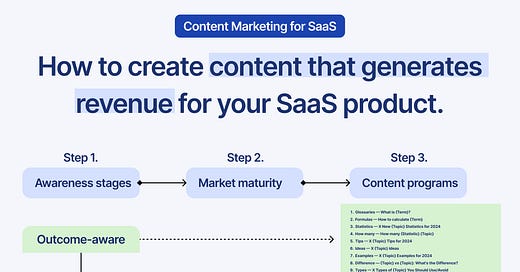



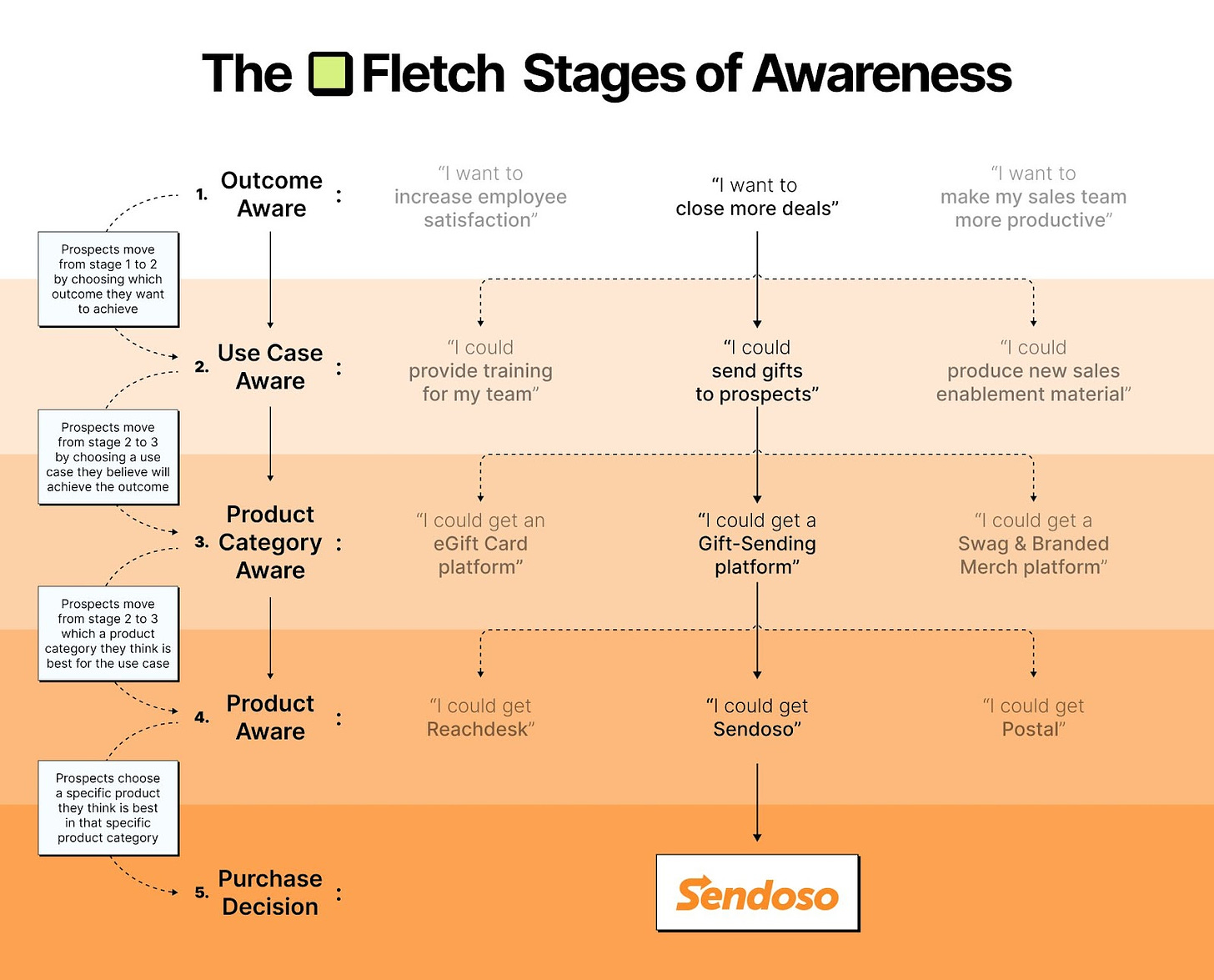
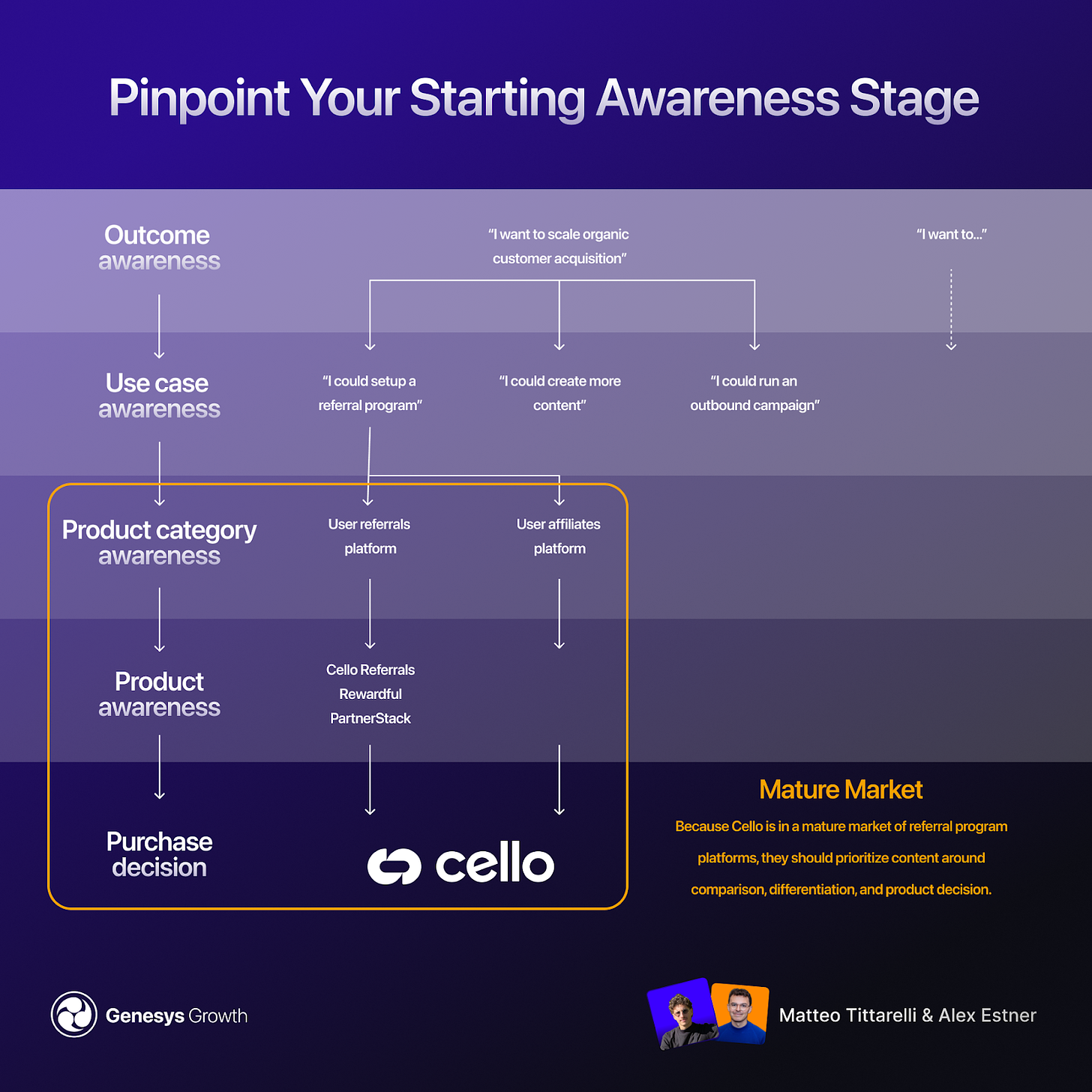
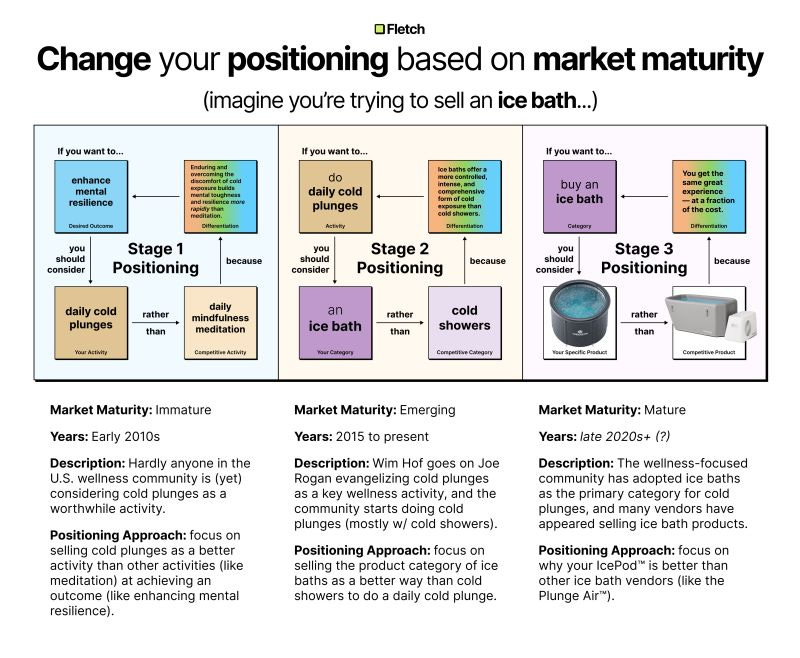
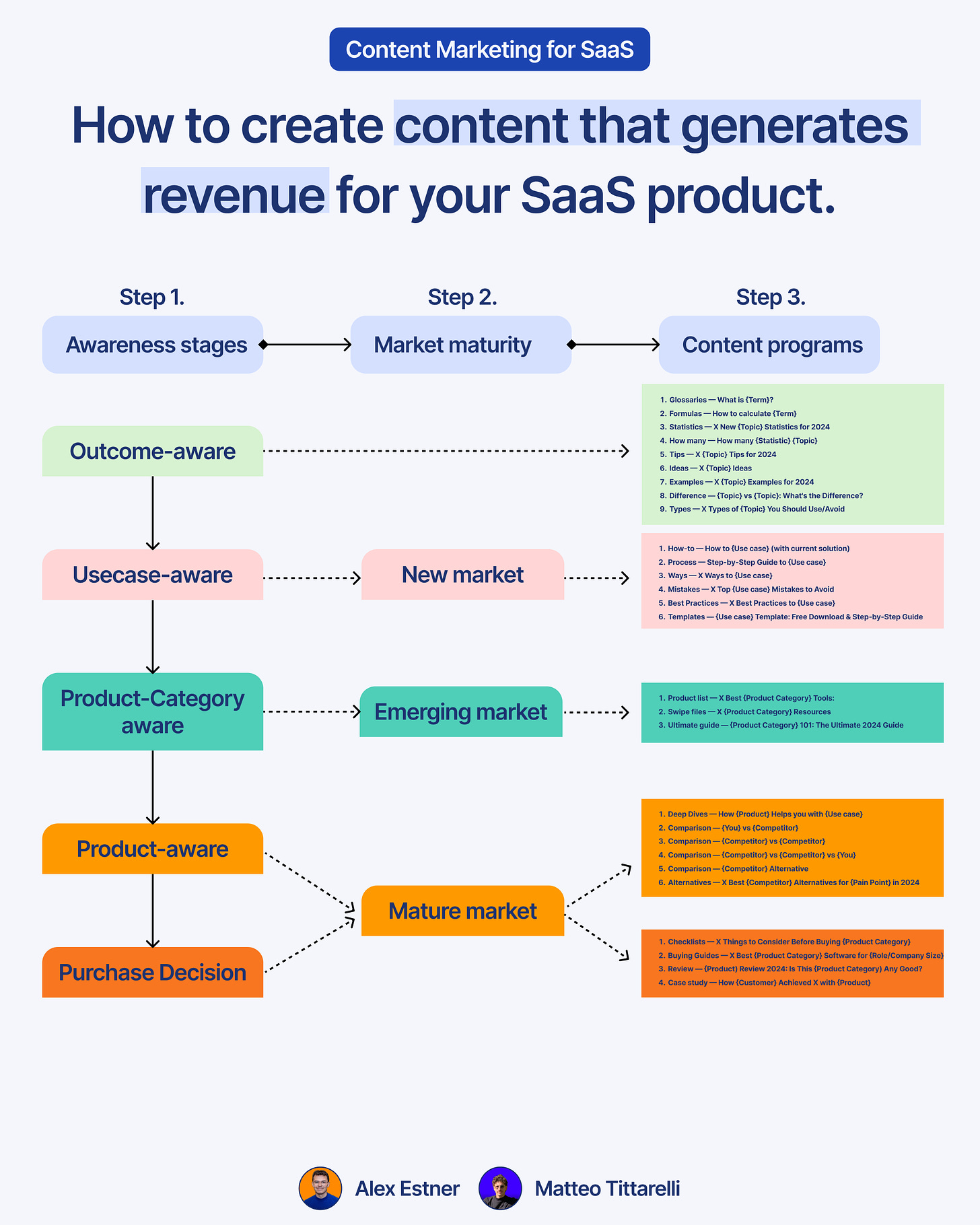
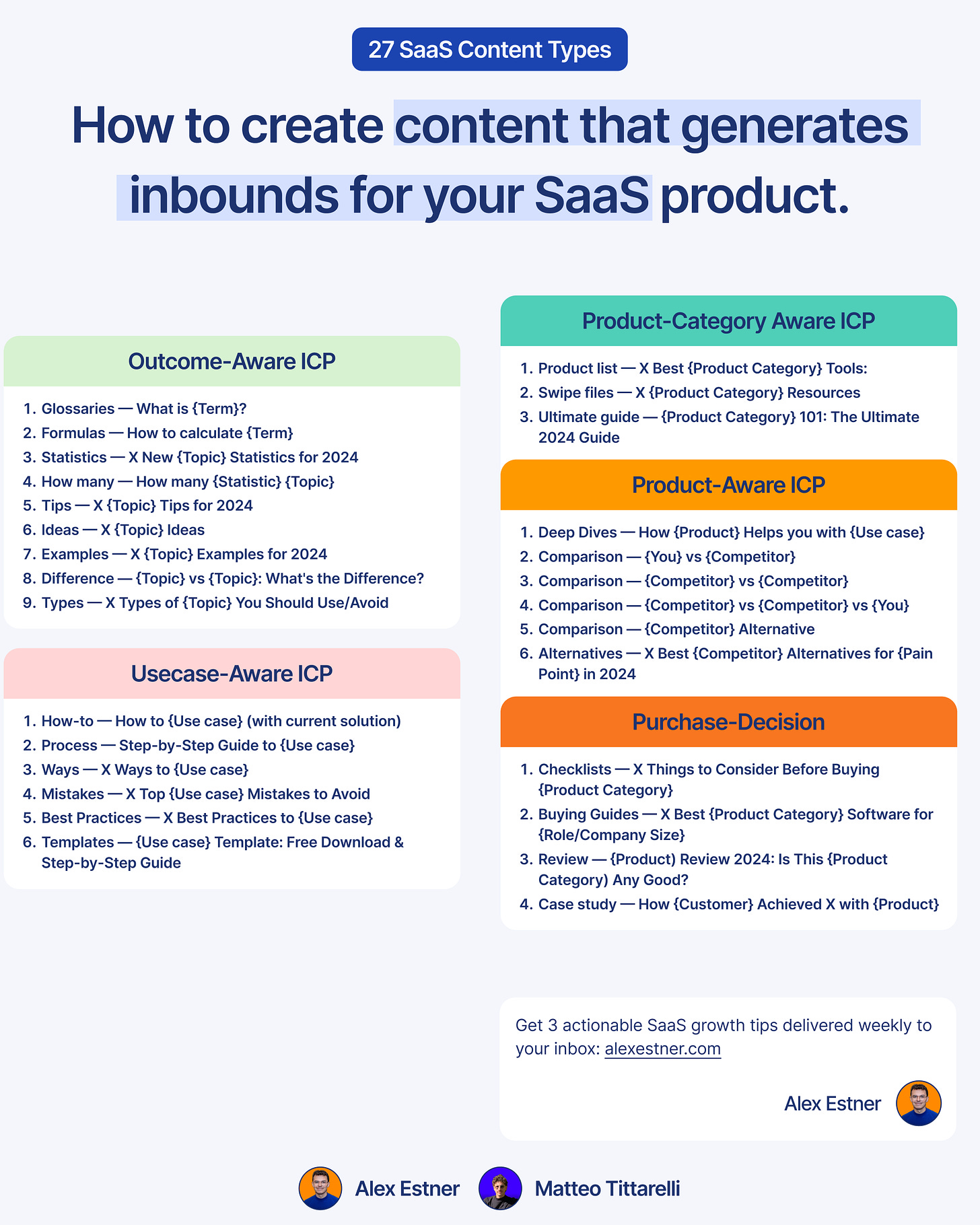
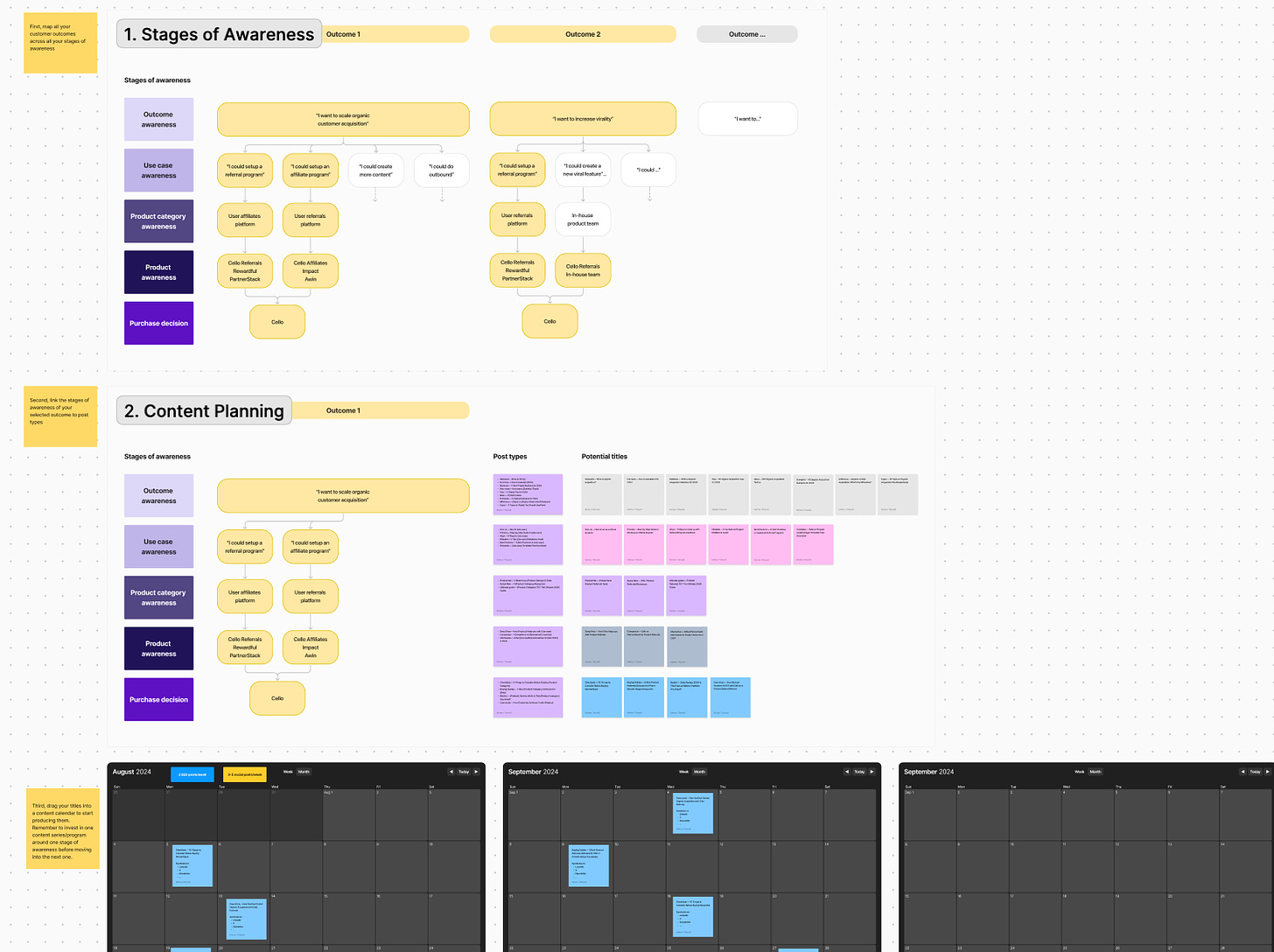
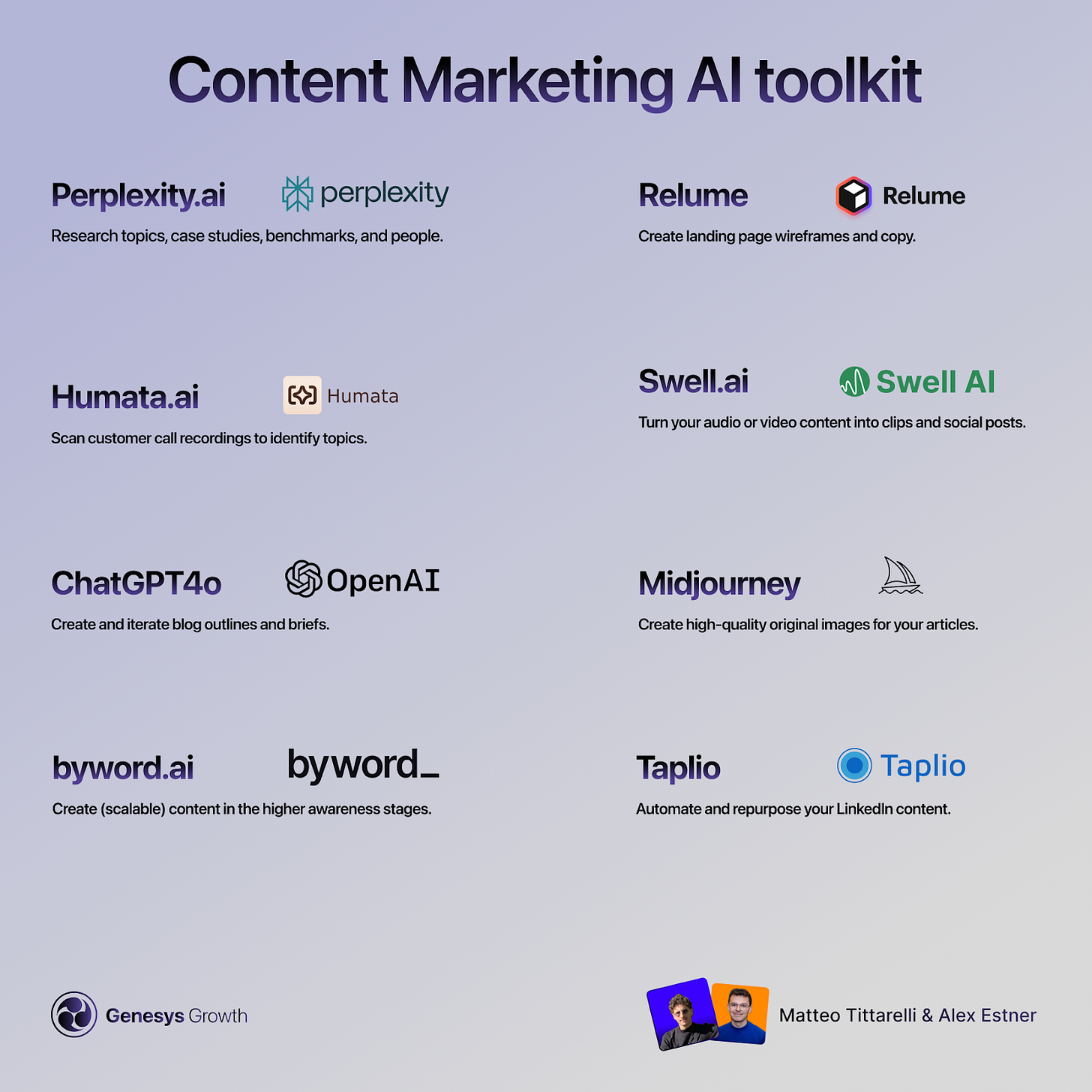

Great Article on Saas. Must-Read article for newbies